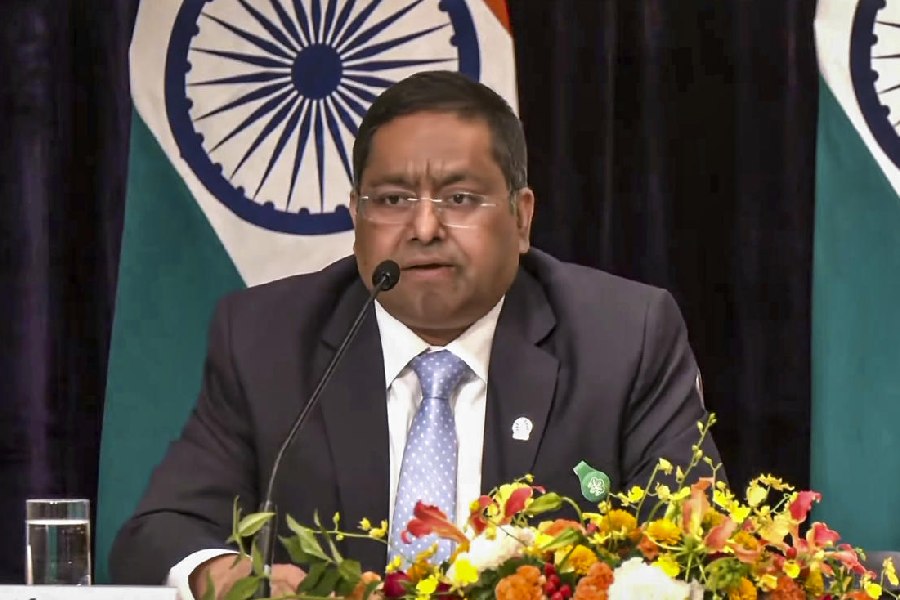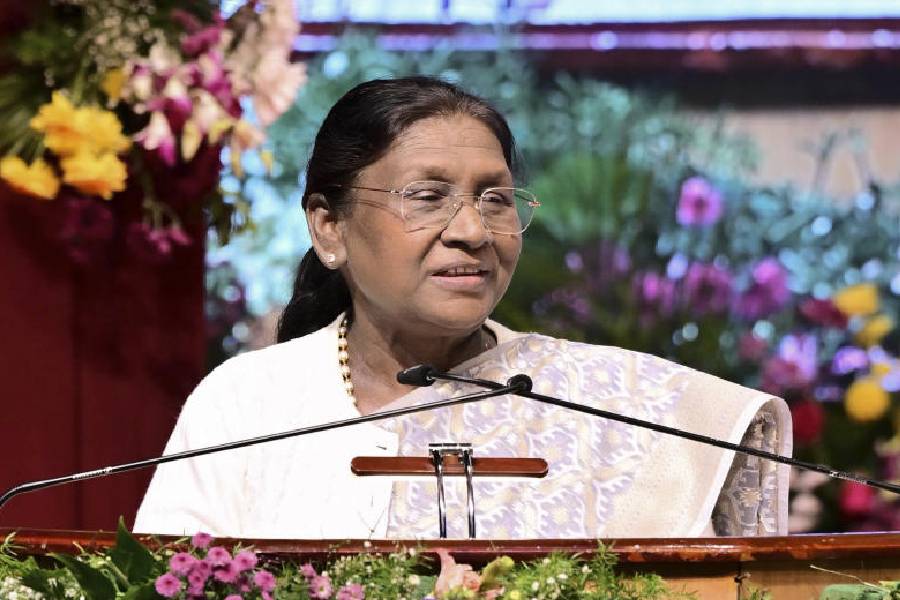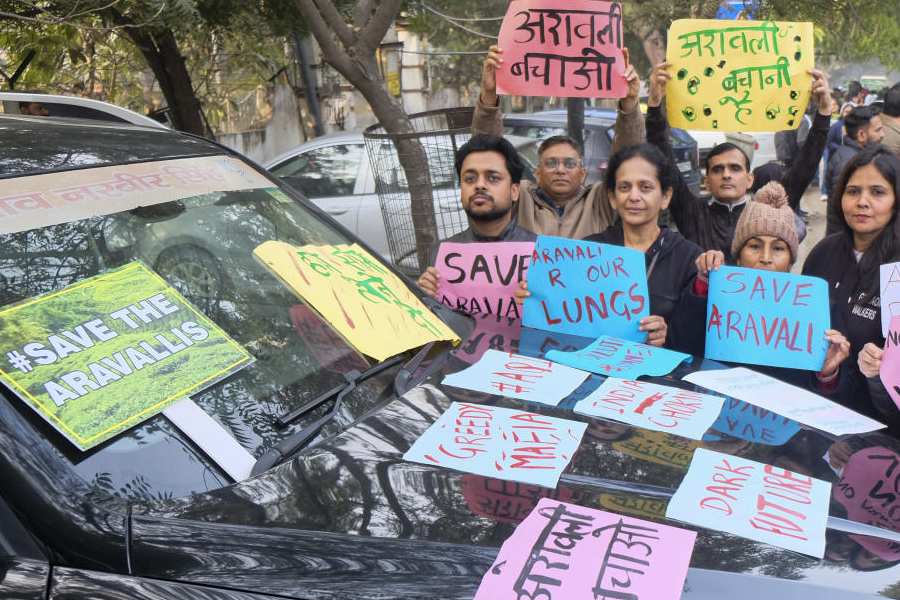 |
 |
 |
 |
| (From top): Dr Rima Mukherji counsels patients; Dr Vihang Vahia, Dr Nimesh Desai and Dr Samir Parikh at their respective chambers |
Jim Mehta is a very hassled 15-year-old. The Class VIII student has consistently done badly in his exams even though he has studied hard and had plenty of tuition. His parents want to know where he’s going wrong ? Is he tense before an exam? If so, how does he learn to ease up a bit? Or is there something wrong with his methodology?
Sheena Singh, a 23-year-old woman wants pre-marital advice. She is settling for an arranged marriage but is nervous about it and wants the views of an unbiased neutral expert.
Nineteen-year-old Anindya Basu, a college-going student, is struggling to come to terms with his homosexual tendencies. He wants somebody to hear him out and show him a way forward.
Where did all these people go for help? Amazingly enough, they didn’t talk to a wise, all-knowing uncle or aunt. They abandoned the inhibitions of an earlier generation and went to see psychiatrists. And, they weren’t alone: Indians are crowding into psychiatrists’ offices around the country.
Dr Rima Mukherji, a consultant psychiatrist practising in Calcutta with the Westbank Hospital and Sri Aurobindo Seva Kendra, has been a witness to the sea-change that’s taking place. For a start, her appointments diary is choc-a-bloc. What’s more, people ? who in an earlier decade wouldn’t have been seen dead in a psychiatrist’s office ? are coming to her for all types of different reasons. “In the late ‘90s, I started getting serious psychiatric patients with schizophrenia and bipolar disorders. Now the range is much wider,” she says.
Adolescent problems, marital matters, eating disorders, sleep disorders and sexuality issues ? these are cases that are increasingly featuring in the psychiatrist’s file. “We cannot call them new problems. It’s just that society is coming out of the closet with its anxieties,” says Dr Nimesh Desai, head of department of psychiatry at the Institute of Human Behaviour and Allied Sciences (IHBAS), Delhi. Dr Mohan Agashe who practises psychiatry in Pune calls it “new bottling of old wine”.
What’s happening? Most doctors reckon these are modern disorders that are part and parcel of a fast-paced, urban lifestyle. “The shift system of working causes sleep and eating disorders. High levels of stress, long duty hours and high levels of expectation are responsible for half our troubles,” says Dr Samir Parikh, consultant psychiatrist with Max HealthCare in the Capital which has a programme called Max Organisational Psychology Initiative for corporates and call centre workers. The counselling units work with them on stress management.
Take a look at the call centre industry which has boomed in the last five years. There are more reasons than one why it’s a high-stress job. Workers are under constant surveillance and also have to put up with rude and unhappy customers at the other end of the line. In addition, their body clocks get affected because of shifts that run through the night ? and if that isn’t enough, it’s tough to meet friends outside because they work such unsociable hours. Says Parikh, “Besides your biological life suffering, the risk of substance abuse becomes high. There is fatigue, human errors and social problems to deal with.”
Take the case of one worker who went to a psychiatrist recently and complained that she always had to talk very loudly because that was the only way to overcome the accent problem. Says Mukherji, “At times when they are too troubled, I ask them to quit. It is ultimately important to be physically and mentally healthy.”
But the trouble can start much earlier. Doctors nowadays report more cases of complaints like Attention Deficit Hyperactive Disorder (ADHD) and other similar behavioral problems. Some teenagers even drop in on their own or are sent by their schools and parents.
“A quarrelsome attitude, disobedience, the tendency to wander away from home and return late, a bullying behaviour, anti- social activities and cruelty to animals are warning signals for major problems to come. We might be looking at future juvenile delinquents. So it’s better to take a look before it causes irreparable harm to the psyche,” says Dr Rajesh Kumar, consultant psychiatrist with IHBAS.
Some problems have become so common that doctors are holding regular sessions at certain times of the year. Parikh, for instance, holds therapy sessions just before exams where he counsels children on how to improve their memory and go about revision. He recently conducted a workshop in Jaipur that aims to train teachers on how to handle students. Also, Max Healthcare conducts workshops and seminars that deal with matters ranging from study skills, personality, student-teacher and parent-teacher relationships to adolescence and sexuality. Says Parikh, “If it’s a secret anxiety disorder it may need medication.”
The mental health scenario has certainly changed in the past few decades. Earlier there was a huge stigma attached to a visit to a psychiatrist. And families tended to be secretive about mental illnesses. The natural outcome was that a visit to the shrink became a hush-hush affair.
“Today consumer-friendly readership has made the taboo low. The media has played a huge role in creating awareness. This discussion of issues ranging from the serious to the frivolous have changed attitudes. Pick up any magazine or newspaper and you see the quote of a psychiatrist somewhere. It makes a difference. Mental health has becomes the focus,” says Parikh.
Dr Mukherji agrees. “Many of my patients visit me after they see my programmes on television or read about me in newspapers. Recently I had this 21-year-old student visiting me after she saw my name somewhere. Her parents didn’t even know about it. She wanted to improve her confidence and become glamorous,” she says.
“There is a recognition of mental health that is a big step forward. It has moved from the limited realms of mental hospitals to that of general hospitals,” says Dr Vihang Vahia, a consultant psychiatrist with three Mumbai hospitals ? Lilavati Hospital, Breach Candy Hospital and Cooper Hospital.
The reservations people had about psychiatrists weren’t only related to social stigmas. There was also the question of affordability. Most people believed that psychiatrists were horrendously expensive ? therefore, only the upper echelons of society could afford to pour out their tales of woe. But even that’s not necessarily true. Most psychiatrists charge between Rs 300 to Rs 800. In government setups, you get to make a card for Rs 10 to Rs 30 for a visit.
One reason why mental health issues are coming to the forefront is the breakdown of family structures. In the last 20 years the joint family has weakened and value systems have altered. “The wise old man of the family or the mother-like figure of an aunt took care of your problems and lent a sympathetic ear. In nuclear families where both spouses are working, there is little time to spare for each other or the other family members,” says Dr Agashe.
The upsurge in the number of patients has also resulted in a corresponding increase in the number of practitioners. According to the health ministry there were about 2,219 mental health practitioners in 2002 and that has climbed to 3,500 in 2005. Unfortunately, there are problems such as a not-so-well-equipped mental health infrastructure. The result: “Some psychiatrists spend not more than a minute or two interacting with the patient, either for want of skill or lack of time,” says Dr Chugh. To cope with this discrepancy, says Dr Agashe, there are clinical psychologists and therapists besides non-governmental organisations that reach out to distressed individuals.
However, some doctors maintain that ‘mental’ is a word that rarely finds favour with any individual. “People hesitate. We realise this when we hold camps in the community and see people pouring in with their problems. They don’t feel comfortable visiting a hospital even if they have severe problems,” says Dr B S Chavan, professor and head of department of psychiatry at the Medical College Hospital, Chandigarh. Yet there has been a substantial 30 per cent increase in the number of patients that Chavan has witnessed in the last five years.
There are differences, according to the professionals between the metros and the small towns ? and there are even differences between the metros. If Delhi and Mumbai are faced with the dilemmas of a fast-paced life, metropolitan cities such as Calcutta and Chennai had slightly different problems, feels Dr S Nambi, professor of psychiatry at the Madras Medical College and president of the Indian Psychiatry Association. “Chennai is a new town compared to the others. It has a very different drugs, dress, food and youth culture. I usually get patients in the 25-40 age group who are trying to deal with relationship and adjustment problems. There are also synthetic drug abuse cases involving mostly the use of opium injections,” he says.
As a melting pot of different cultures, Mumbai has its own share of problems. The youth who arrive here from various parts of the country to be absorbed in the ‘fast life’ in the city, end up absorbing the problems as well. “I get young people who talk about problems related to lifestyle ? conflict between the personal value system and the social system, anxiety and exhaustion,” says Dr Vahia.
A small town like Chandigarh, says Chavan, is more comfortable with a counsellor than a psychiatrist. And people here are wary of taking medication for their problems. “In 1996, I shifted from AIIMS, Delhi to Chandigarh. And I have noticed that people here feel that the drugs are addictive. They don’t like medication,” he says.
Of course, there can be other problems like the well-known one of transference. The patient becomes over-dependent on the doctor and keeps going back at the slightest excuse. Says Parikh, “Initially it helps in building a rapport with the patient. But it is cured along with the problems. The belief that visiting a psychiatrist means visiting him for life is a myth. You come to a shrink only when there are problems you cannot handle by yourself.”
(Names of patients have been changed on request)
Lead photograph by Subhendu Chaki
Other photographs by Rupinder Sharma and Gajanan Dudhalkar










